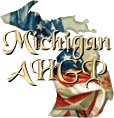
Finding your ancestors is half the fun, but finding where and how they lived is the other half. Knowing their history keeps their memories alive.
Genealogical advice from Cheryl:
First buy a genealogical database program. I have a Mac and I’ve used Reunion for many years. Before that I used paper family group sheets and tree charts.
Pick the brains of all your older relatives to get the stories and information they have. Video them or make really good notes. Send letters to distant cousins, including the ones you will find while doing your research.
Go to RootsWeb.com. It is a free genealogical databse, where people upload their research. Search for the oldest ancestors you know of and see if anyone has done some or all of your work for you. Trust but verify, because the family trees there are only as good as the research that went into them. It is very easy to get suckered into copying someone else’s work into your tree, only to find later that it is wrong.
Findagrave.com is the next place to go to see where your ancestors are buried and who is next to them. Not all cemeteries have been indexed. I’ve noted other sites that also have cemetery records. Visit the cemeteries and take your own pictures of the graves.
Use familyearch.org to look up census data and get family members. Especially from 1850 on there is a lot of good information.
Visit the Castle Museum and Hoyt Public Library and go through the info they have there. Maybe someone has written a book or pamphlet on your family. Something written before the internet may be more reliable than RootsWeb or Ancestry because they used family Bibles or diarles as the sources.
At some point you’ll sign up for Ancestry.com. It’s not cheap, but they have lots of info and scour their related databases - social security, findagrave, newspapers and much more to give you hints.
